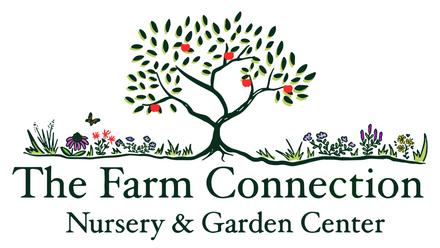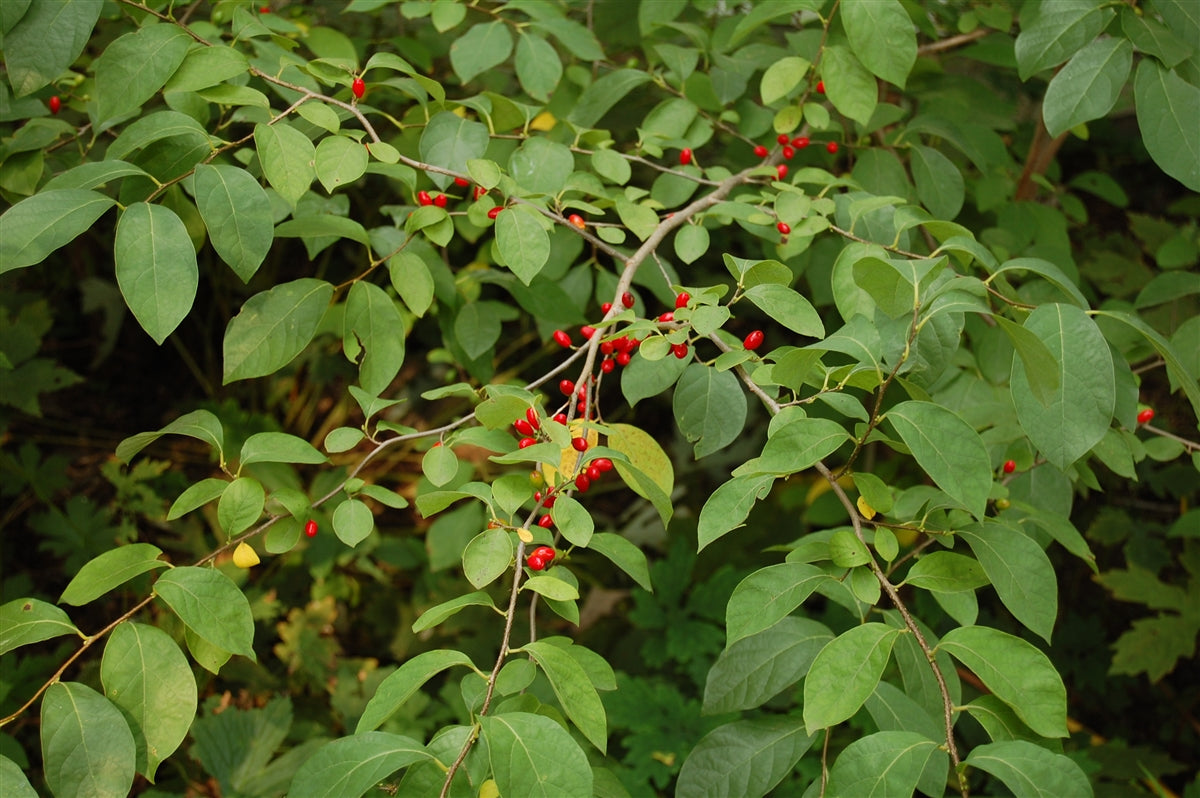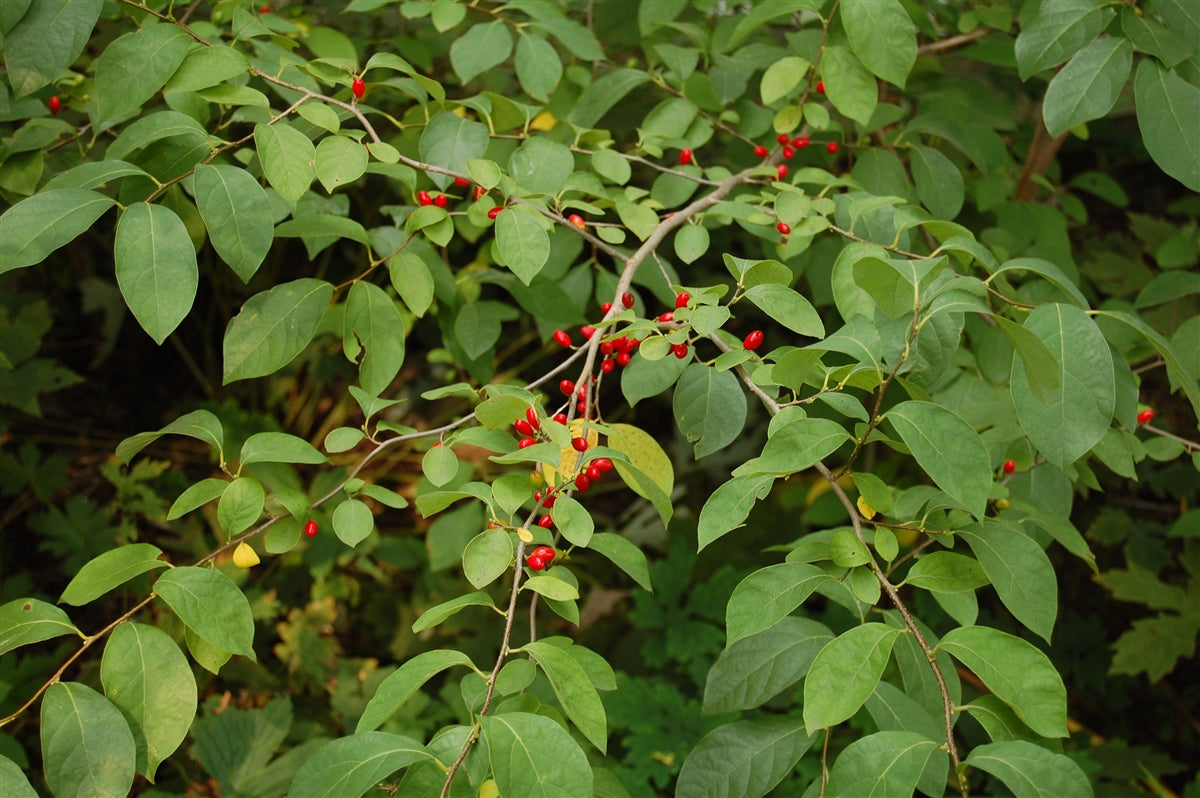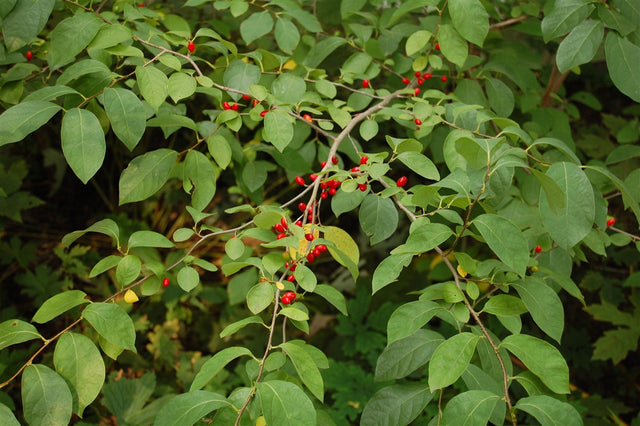Spicebush, Bare Root
Butterfly Host & Wildlife Berry Source
Spicebush, Bare Root - Bare Root / 2-3' Seedling is backordered and will ship as soon as it is back in stock.
Couldn't load pickup availability
Delivery and Shipping
Delivery and Shipping
Make sure to thoroughly review our entire "Shipping, Returns, Refunds, and Our Guarantee" page for all relevant details about ordering from our store.
Making a purchase from our store constitutes an agreement to all the conditions outlined in those policies.
We appreciate your support and look forward to being your favorite plant provider!
Subscribe to our newsletter
Sign up for exclusive offers.
Spicebush (Lindera benzoin)
Spicebush is a versatile native deciduous shrub with aromatic leaves, twigs, and berries, offering high ecological value and cultural significance. Found naturally in moist woodland understories and along streams in the eastern United States, spicebush provides early-season nectar, larval food for butterflies, and a bounty of medicinal and culinary uses. It’s a keystone species in the eastern forest understory and an essential plant for anyone building a resilient, biodiverse native garden or food forest.
Key Characteristics
• Larval host for the Spicebush Swallowtail butterfly
Spicebush is the primary host plant for the Spicebush Swallowtail (Papilio troilus), which lays its eggs on the leaves. The caterpillars feed exclusively on Lindera benzoin, and planting it is one of the most direct ways to support this beautiful native butterfly.
• Early-season blooms feed native bees
Clusters of tiny yellow flowers bloom in early spring—often before the leaves emerge—providing an important nectar source for native solitary bees and other small pollinators when few other flowers are available.
• Edible and medicinal traditional uses
Leaves and twigs can be steeped to make a lemony-spicy tea, and the red berries (on female plants) were historically dried and used as a substitute for allspice. The bark and twigs were used traditionally for colds, fevers, and digestive support, especially as a warming, stimulating tea.
• Thrives in woodland gardens and moist hedgerows
Spicebush prefers moist, rich soils and partial to full shade, making it an ideal candidate for shaded permaculture systems, streambank plantings, and the shrub layer in a food forest.
• High wildlife value year-round
Its berries are a favorite of migratory birds like wood thrush and veery, and its dense form provides shelter and nesting habitat. The plant also supports a variety of beneficial insects, making it a biodiversity booster in any native garden.
Product Details
• Native range: Eastern and central United States
• Plant life cycle: Deciduous shrub
• Sun requirements: Part shade to full shade (tolerates some sun)
• Soil requirements: Medium to medium-wet; prefers rich, moist soils
• Mature height: 6–12 feet
• Bloom time: Early spring
• Bloom color: Yellow
• USDA Hardiness zones: 4–9
Spicebush brings beauty, fragrance, and function to shaded landscapes while supporting butterflies, birds, and people. It’s a must-have for anyone cultivating native biodiversity or a productive understory.
-
Sun RequirementsFull Sun, Part Sun/Shade
-
Soil RequirementsMedium, Medium-Wet
-
Bloom ColorYellow
-
Bloom TimeMarch, April
-
USDA Hardiness ZonesZone 4, Zone 5, Zone 6, Zone 7, Zone 8, Zone 9+
-
Native StatesMaine, Vermont, New York, Pennsylvania, Ohio, Indiana, Illinois, Michigan, Wisconsin, Missouri, Kentucky, Tennessee, Virginia, West Virginia, North Carolina, South Carolina, Georgia, Alabama, Mississippi
Payment & Security
Payment methods
Your payment information is processed securely. We do not store credit card details nor have access to your credit card information.




